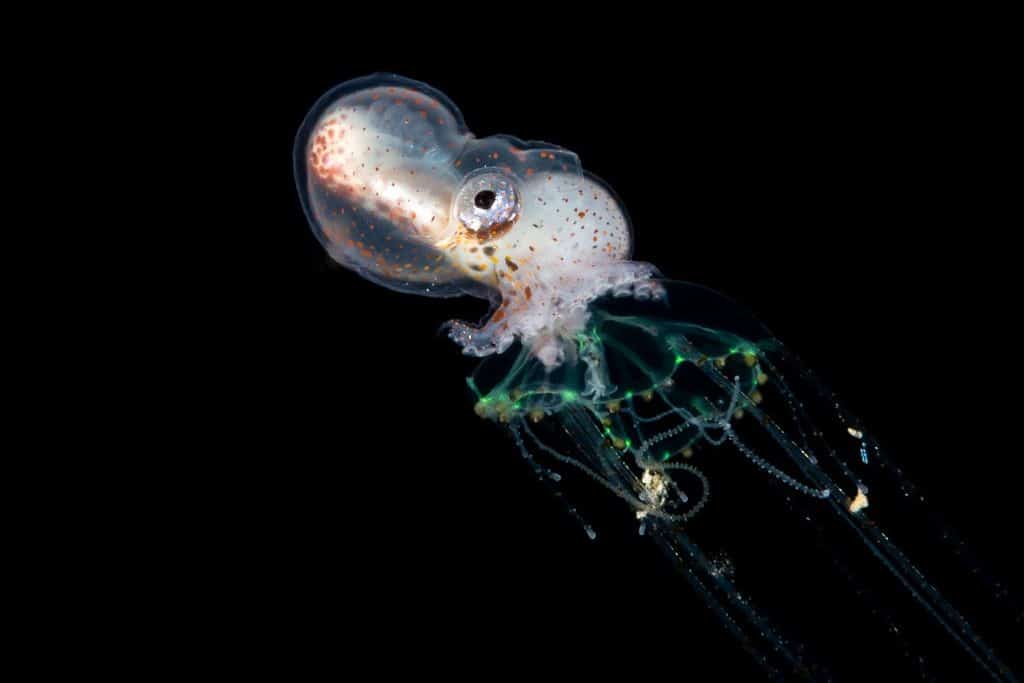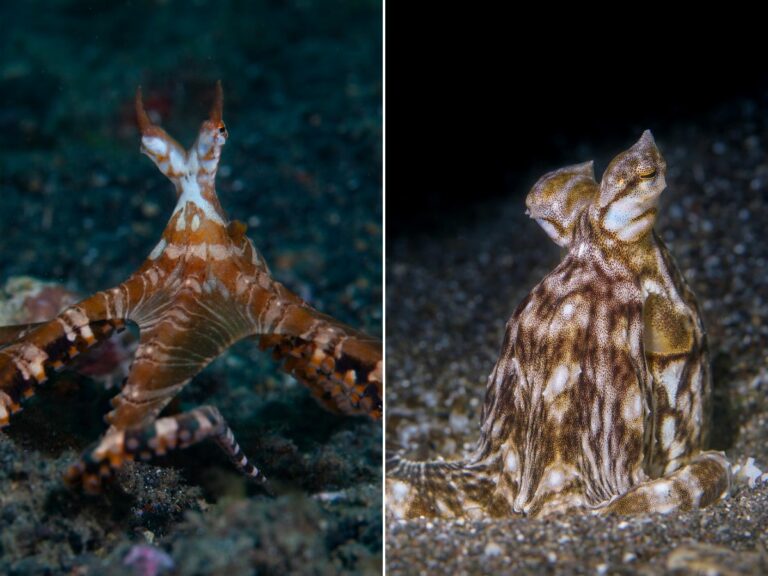Top 5 Smallest, Teeniest, Tiniest, Octopus Species!
Itsy bitsy! Teeny weeny! Extra-tiny! Welcome to the world of pocket-sized octopuses! I know octopuses are sometimes portrayed as scary monsters, but how scary can an octopus really be when it’s the size of a paper clip? I dare you not to fall in love with these fun-sized cuties! Here are just 5 of the world’s smallest octopus species guaranteed to make you go “awwww”.

1. Hairy Octopus (no official scientific name)
The size of a large paper clip and looking like a tiny ball of algae, it’s no wonder the tiny Hairy Octopus wasn’t discovered until the early 2000s.
Reported by divers as having a total length of up to 2 inches (2-5 cm) with an arm length from 1-4 inches (3-10 cm), which makes spotting one an extremely lucky occurrence. They expertly blend into areas of fine rubble, seagrass, and volcanic black sand with algae patches at depths between 26-65 feet (8-20 meters).

Their size, along with their fuzzy skin, called papillae, has allowed them to go unnoticed. Papillae are a network of finely controlled muscles in the skin that can create bumps and ridges allowing this little nugget to seemingly disappear into its environment.
Thus far, reported sightings of the hairy octopus have come from the waters off Bali and Lembeh strait in Indonesia and Okinawa in Japan. For recreational divers, finding this species is the ultimate prize in an underwater treasure hunt!
Note: To learn more about the Hairy Octopus, take a look at this blog post!
2. Star-Sucker Pygmy Octopus (Octopus wolfi)
I present to you the smallest octopus of the bunch, the Star-Sucker Pygmy Octopus!
Found in shallow waters throughout the Indo-Pacific Ocean, this octopus grows no bigger than a bottle cap at 1 inch (2.5 cm) and weighs no more than a raisin about 1 gram (0.04 ounces). They also have the shortest lifespan of around 6 months!

Due to its size, the Star-Sucker Pygmy Octopus spends over half their life floating near the surface living amongst and feeding on plankton. Once they become big enough to survive on the reef, they hunt small crustaceans and shellfish.
Unlike most species who only lay eggs once and then die, this little one can lay multiple clutches of eggs. Female Star-Sucker Pygmy Octopuses will lay one batch of eggs, look after them till they hatch, and immediately lay another batch right after. They have been observed doing this up to 3 times in some cases.
I don’t think anyone will be mad about a world with more of these little cuties in it!

3. Blue-Ringed Octopus (Hapalochlaena sp.)
The prettiest and the deadliest one of our tiny fab five!
Depending on the species of Blue-Ringed Octopus (here are 4 known species and potentially up to 10 that exist), they can be about the size of a golf ball all the way up to baseball-sized.
Known for being tiny but deadly, a Blue-Ringed Octopus carries around a powerful neurotoxin called tetrodotoxin that could bring down 26 adult humans. That’s right! This miniature octopus with iridescent blue rings covering its yellow body has toxic saliva that is 1000 times more powerful than cyanide. This toxin is also distributed throughout all body parts with high concentrations in the arms, abdomen, and gills.

But, not to worry! Like most octopuses, the Blue-Ringed Octopus likes to keep to themselves, spending their days hiding out in their dens only coming out to grab a quick crab or shrimp snack.
If you are ever lucky enough to spot one in a tidepool or on a dive, just be sure to admire them from afar!
Note: To learn more a few more fun facts about the Blue-Ringed Octopus, take a look at this blog post!
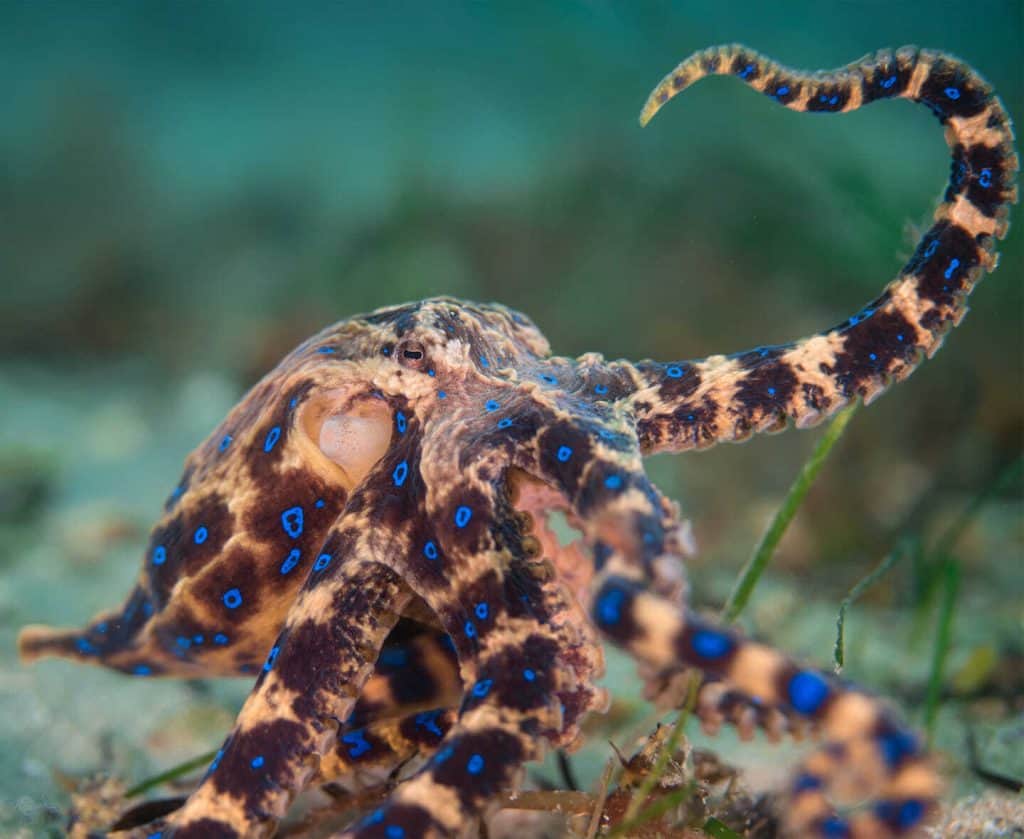
4. Male Violet Blanket Octopus (Termoctopus violaceus)
Sorry lady Blanket Octopus, only the males are making our teensy-tiny octopus list.
The reason being that the Female Blanket Octopus can grow up to 6.6 feet (2 meters) long, which puts them squarely in the mid-sized octopus category! They are a sight to behold with a spectacularly beautiful cape they use to float around the high seas.
The males…not so much. They are about the size of a walnut measuring in at 0.9 inches (2.3 cm). They can literally fit inside the pupil of the female!
This couple represents an extreme degree of sexual size dimorphism— in fact, MORE than ANY non-microscopic animal on the planet!

🐙 Octopus Fun Fact
While the male might not have a cape to make any superhero jealous and their main purpose in life is to deliver their sperm to the female, Male Blanket Octopuses have one nifty trick up their arms. They steal the stinging tentacles from jellyfish to use for themselves.
These male cephalopods seem to be immune to the stinging cells so they can wield them like little Indiana Jones whips to stun and catch prey!
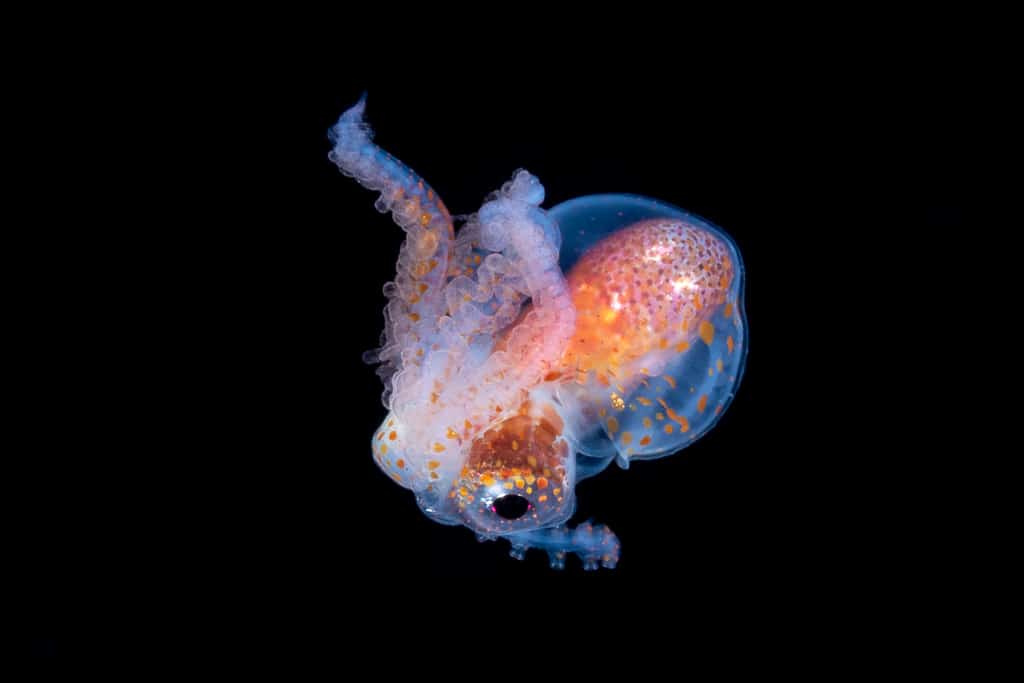
5. Male Paper Nautilus (Argonauta argo)
Also known as the Argonaut Octopus, the Paper Nautilus is a unique species that drifts along the open seas in a homemade translucent shell. Unless you’re a male. Then you’re eight times smaller than the female and don’t get to have a shell.
Yet another sexual size dimorphism situation where the male is significantly smaller than the female (Are you sensing a trend?).
A mighty female Paper Nautilus can grow to over 15 inches (38 cm) whereas the male rarely cracks the 1-inch (2.5 cm) mark. The male Paper Nautilus also differs from the females by being semelparous, which means they only mate once and then die. Females are iteroparous so they will lay eggs multiple times throughout their lifetime.
How is this possible? Well, she has the ability to store a male’s hectocotylus, which is a specialized arm carrying sperm. A male can detach that arm and give it to the female allowing her to fertilize her eggs on her own time.
Oh, how the tables have turned…

The Smallest Octopus Species: Which One Is Your Favorite?
This list just scratches the surface of tiny octopus adorableness with much more pint-sized creatures out there in the ocean (some of which are probably just waiting to be discovered!).
As they say, good things come in small packages, and it turns out this applies to cephalopods as well.
If you want to educate yourself some more about all sorts of different cephalopods, take a look at our encyclopedia. Or, what we call it, our Octopedia!
Connect with other octopus lovers via the OctoNation Facebook group, OctopusFanClub.com! Make sure to follow us on Facebook and Instagram to keep up to date with the conservation, education, and ongoing research of cephalopods.
More Posts To Read:
If you enjoyed learning about the smallest octopus species, we recommend taking a look at some of these other profiles:
- Maori Octopus Facts: One Of New Zealand’s Largest Species!
- 5 Awesome Dumbo Octopus Facts (The Cutest Octopus Ever!)
- 7 Fun Facts About The Majestic Mimic Octopus!
- Fun Facts About The Strawberry Squid
- 9 Giant Pacific Octopus Facts That Will Blow Your Mind
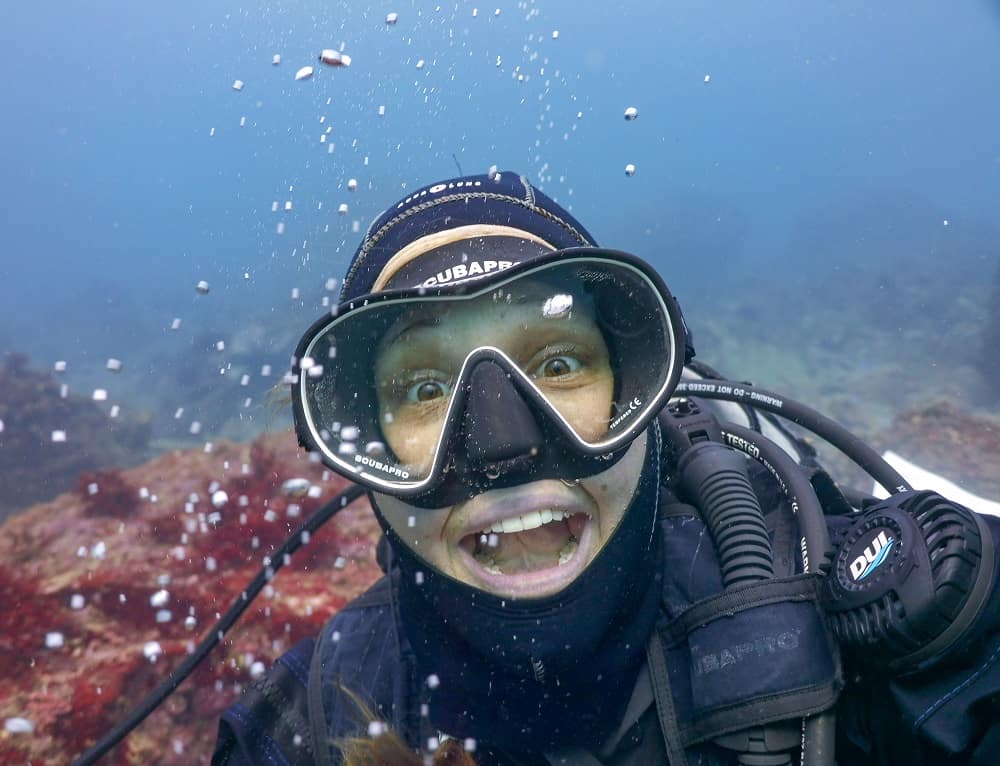
Corinne is a biologist with 10 years of experience in the fields of marine and wildlife biology. She has a Master’s degree in marine science from the University of Auckland and throughout her career has worked on multiple international marine conservation projects as an environmental consultant. She is an avid scuba diver, underwater photographer, and loves to share random facts about sea creatures with anyone who will listen. Based in Japan, Corinne currently works in medical research and scientific freelance writing!
